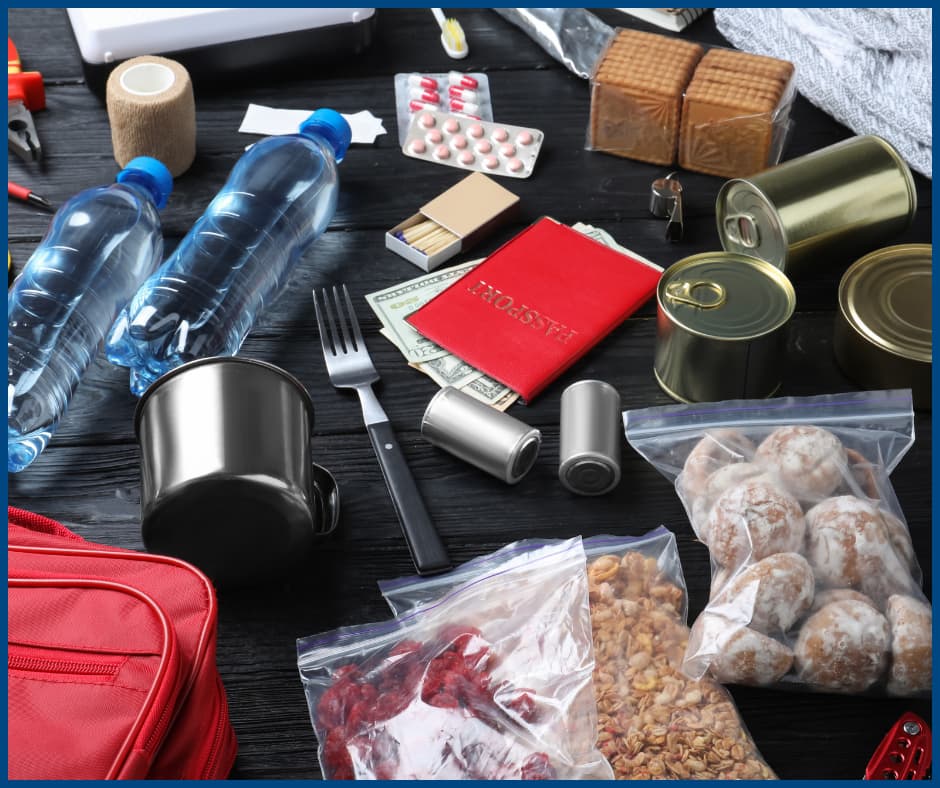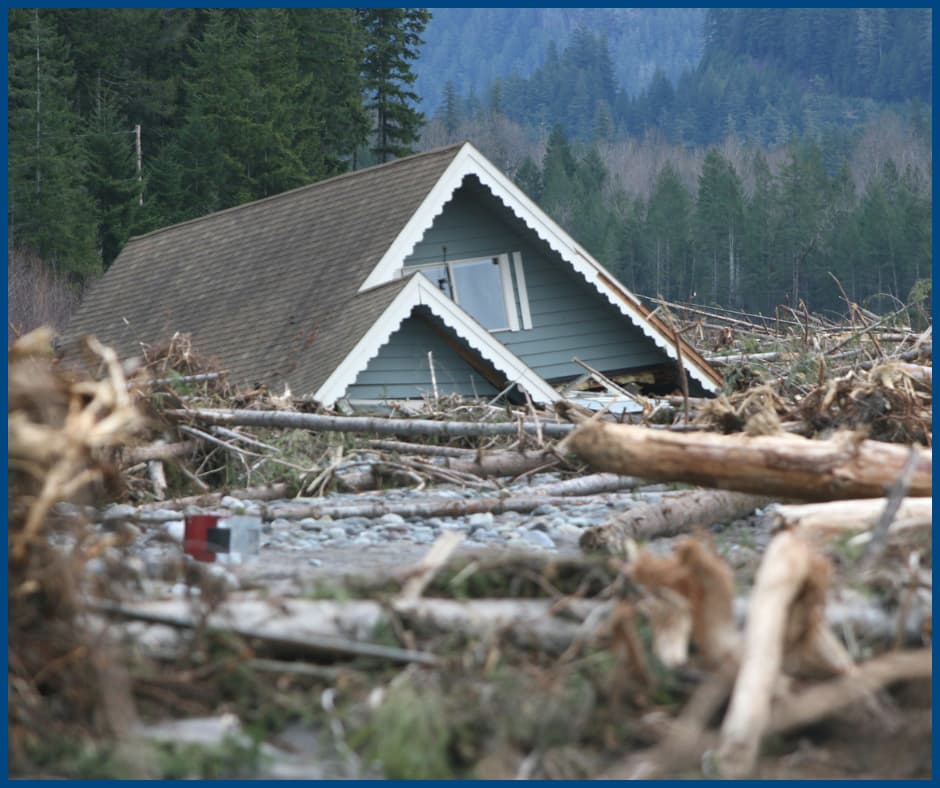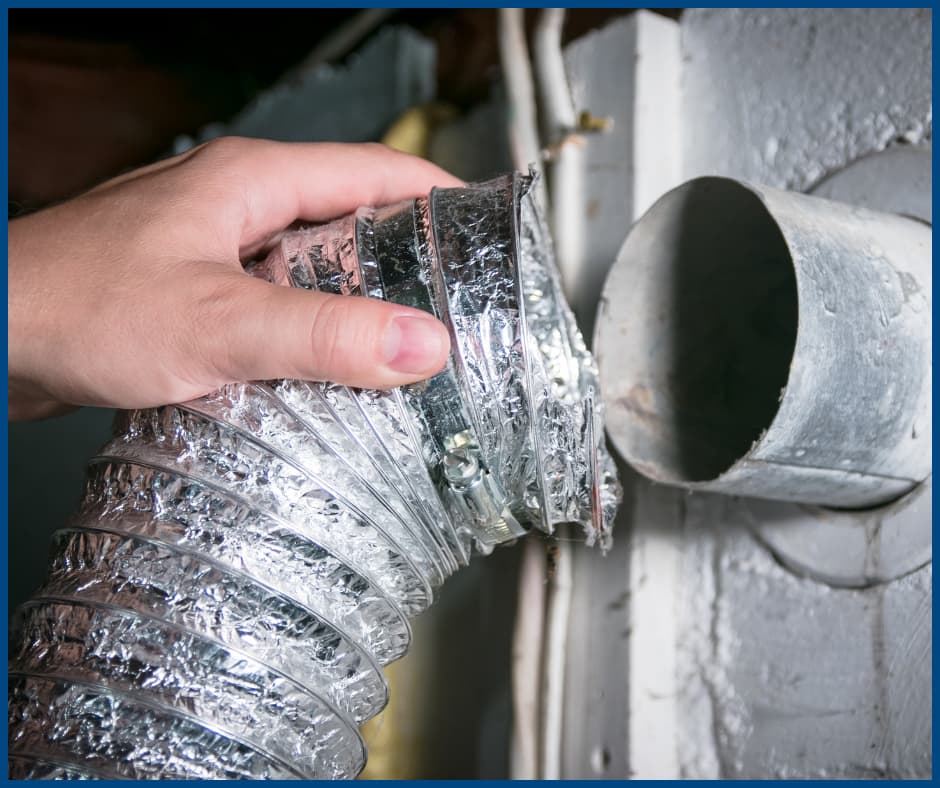Your Guide to National Preparedness Day: Prepare, Protect, Prevail
National Preparedness Day is a crucial reminder for homeowners to assess their readiness for unexpected emergencies. At AmeriSpec Inspection Services, we believe that every home should be a sanctuary, capable of withstanding the challenges of natural disasters, accidents, and other unforeseen events. This comprehensive guide is designed to help you prepare your home and family for any eventuality, ensuring safety and peace of mind.
Why National Preparedness Day Matters
National Preparedness Day serves as a national call to action, urging individuals and families to evaluate their preparedness for emergencies. Whether it’s a natural disaster like a hurricane, earthquake, or flood, or a man-made event such as a power outage or hazardous material spill, being prepared can make all the difference in ensuring the safety of your loved ones and the integrity of your property.
Essential Steps for Home Preparedness
1. Conduct a Home Inspection
Before you can prepare your home for emergencies, it’s crucial to understand its current condition. A thorough home inspection by AmeriSpec Inspection Services will identify any vulnerabilities that could be exacerbated during an emergency. From structural integrity to electrical systems, our expert inspectors provide a detailed assessment that helps you prioritize necessary repairs and upgrades.
2. Develop a Family Emergency Plan
An emergency plan is the foundation of preparedness. Start by discussing potential scenarios with your family and outline specific actions for each type of emergency. Key elements of a family emergency plan include:
- Communication Strategy: Establish a communication plan that includes emergency contacts and a meeting place if you’re separated.
- Evacuation Routes: Identify multiple evacuation routes from your home and neighborhood. Practice these routes regularly.
- Emergency Contacts: Ensure every family member knows how to contact local emergency services and other key contacts, such as relatives or neighbors.
3. Assemble an Emergency Supply Kit
An emergency supply kit is your go-to resource in the event of a disaster. Here’s what every kit should include:
- Water: At least one gallon per person per day for three days.
- Non-perishable Food: A three-day supply of easy-to-prepare food.
- First Aid Kit: Include bandages, antiseptic, and any necessary prescription medications.
- Tools and Supplies: A flashlight, extra batteries, multi-tool, whistle, and local maps.
- Personal Items: Include clothing, blankets, hygiene products, and important documents.
4. Secure Your Home
Securing your home involves both physical reinforcements and safety upgrades. Consider the following measures:
- Reinforce Windows and Doors: Install storm shutters or reinforce your windows and doors with impact-resistant glass. This is particularly important in areas prone to hurricanes or tornadoes.
- Install Smoke and Carbon Monoxide Detectors: These should be installed on every level of your home and tested monthly.
- Anchor Heavy Furniture: Secure heavy furniture and appliances to the walls to prevent them from tipping over during an earthquake or other disaster.
- Backup Power: Consider investing in a generator to maintain power during outages, especially if you live in an area prone to storms.
5. Review Insurance Coverage
Ensure that your homeowners insurance policy adequately covers potential disasters. Review your policy with your insurance provider to understand what’s included and whether additional coverage is necessary for events like floods or earthquakes. Keep a detailed inventory of your possessions, including photos and receipts, to simplify the claims process if needed.
6. Stay Informed
Knowledge is power when it comes to emergency preparedness. Stay informed about potential risks in your area by:
- Monitoring Local News: Keep an eye on weather reports and local news for updates on potential threats.
- Signing Up for Alerts: Many local governments offer emergency alert systems that notify you of imminent dangers via text, email, or phone.
- Understanding Warning Systems: Familiarize yourself with the warning signals used in your area, such as sirens or emergency broadcasts.
Special Considerations for Different Types of Disasters
Earthquakes
In earthquake-prone areas, securing your home and understanding the specific risks is critical. Focus on reinforcing the structure, anchoring heavy objects, and creating a safe zone within your home where family members can gather during a quake.
Floods
Floods can occur suddenly, especially in areas with heavy rainfall. Ensure your home is equipped with sump pumps, and consider installing flood barriers or sandbags if necessary. Elevate electrical appliances and critical systems above potential flood levels.
Hurricanes
Hurricanes bring powerful winds and heavy rains that can cause extensive damage. Prepare by reinforcing your roof, installing storm shutters, and trimming trees around your property. Have a plan for securing outdoor furniture and belongings to prevent them from becoming projectiles.
Wildfires
For homes in wildfire-prone areas, creating a defensible space is key. Clear vegetation and other flammable materials from around your home, and use fire-resistant materials for roofing and siding. Have an evacuation plan in place and be ready to leave immediately if a fire threatens your area.
AmeriSpec Inspection Services: Your Partner in Preparedness
At AmeriSpec Inspection Services, we’re committed to helping you safeguard your home and family. Our comprehensive home inspections are designed to identify potential risks and provide you with actionable insights to enhance your home’s resilience. Whether you’re concerned about structural integrity, electrical safety, or environmental hazards, our team of certified inspectors is here to help you prepare for the unexpected.
Conclusion
National Preparedness Day is more than just a reminder; it’s an opportunity to take proactive steps to protect what matters most. By conducting a thorough home inspection, developing an emergency plan, and securing your home, you can face any challenge with confidence. Trust AmeriSpec Inspection Services to guide you through every step of the preparedness process, ensuring that your home is ready for whatever the future holds.
Aging in Place: How to Make Home Safe for Seniors
As our loved ones age, ensuring their safety and comfort within their homes becomes increasingly important. Home modifications for seniors are essential to adapt their living spaces to meet evolving physical and cognitive needs. These modifications not only enhance safety but also promote independence and improve the overall quality of life. In this comprehensive guide, we will explore the most effective home modifications for seniors, providing detailed insights into creating a secure and comfortable environment for aging in place.
Understanding the Importance of Home Modifications for Seniors
Aging brings a variety of challenges, including reduced mobility, vision impairment, and decreased strength. These changes can make daily tasks more difficult and increase the risk of accidents within the home. Home modifications for seniors are designed to address these challenges, enabling older adults to live independently and safely in their own homes for as long as possible.
Key Home Modifications for Seniors
1. Entryways and Exits
The entryways and exits of a home can pose significant challenges for seniors, especially those with mobility issues. Modifying these areas is a crucial step in making a home more accessible. Installing ramps with non-slip surfaces and widening doorways can accommodate wheelchairs and walkers, making it easier for seniors to enter and exit the home safely.
Additionally, lever-style door handles are easier to use than traditional knobs, especially for those with arthritis or reduced hand strength. Ensuring that entryways are well-lit with motion sensor lights enhances safety, particularly during the night.
2. Bathroom Safety Enhancements
The bathroom is one of the most common places for accidents in the home, making it a top priority for modifications. Installing grab bars near the toilet and in the shower provides stability and support, reducing the risk of falls. Walk-in tubs and curbless showers with non-slip flooring are excellent investments, as they make bathing safer and more accessible.
Adding a handheld showerhead and a shower chair can further enhance safety and comfort. To prevent scalding, consider installing an anti-scald valve that regulates water temperature. These modifications ensure that seniors can maintain their hygiene routines independently and safely.
3. Kitchen Modifications for Seniors
The kitchen, often the heart of the home, can present unique challenges for seniors. To promote independence and safety, consider lowering countertops and installing pull-out shelves to make reaching for items easier. Lever-handled faucets and touchless controls are particularly helpful for those with arthritis or limited hand strength.
Ensuring that all appliances are within easy reach and have large, clear controls is essential. Adding features like a stove guard to prevent accidental burns and an automatic shut-off for the stove can provide additional safety. These modifications allow seniors to continue enjoying cooking and meal preparation with minimal risk.
4. Bedroom Adjustments for Safety and Comfort
The bedroom should be a comfortable and secure space where seniors can rest. Bed rails can offer support when getting in and out of bed, while adjustable beds allow for easier maneuvering. Ensuring proper lighting with nightlights and touch-activated lamps can prevent falls during nighttime trips to the bathroom.
Additionally, having a cordless phone or emergency call button near the bed ensures that help is always within reach in case of an emergency. These modifications create a safe and relaxing environment, contributing to better sleep and overall well-being.
5. Living Room Adjustments for Accessibility
The living room is a space where seniors spend a significant amount of time, so it should be as accessible and safe as possible. Removing tripping hazards, such as loose rugs and clutter, is a simple yet effective modification. Furniture should be sturdy and at a height that makes sitting down and getting up easier.
Installing grab bars near sitting areas and ensuring that remote controls and other essentials are within easy reach can contribute to a more comfortable and secure living environment. These modifications help seniors enjoy their leisure time without unnecessary risks.
6. Staircase Modifications for Enhanced Safety
Staircases can be particularly dangerous for seniors. Installing handrails on both sides of the stairs is a simple yet effective way to improve safety. For those with limited mobility, a stairlift can provide an easy way to navigate between floors without the strain of climbing stairs.
Ensuring that the stairs are well-lit and equipped with non-slip treads can further reduce the risk of falls. Color-contrast strips on the edges of each step can also improve visibility, helping seniors avoid missteps. These modifications make it easier and safer for seniors to move around their homes.
Home Health Check: A Crucial Step in Ensuring Safety
Regular Home Health Checks go beyond ensuring safety by focusing on the home’s overall condition, helping to maintain it and prevent significant issues down the line. By inspecting key areas like the foundation, roof, plumbing, and HVAC systems, these checks can identify and address early signs of wear and tear before they escalate into costly repairs. Staying proactive with these assessments ensures the home remains up to date, comfortable, and free from potential problems, preserving its value and making it a safe place for seniors to age in place.
Additional Considerations for Senior Home Safety
1. Smart Home Technology
Incorporating smart home technology can significantly enhance the safety and convenience of a senior’s home. Voice-activated assistants can help with daily tasks such as controlling lights and appliances or reminding seniors to take their medications. Smart thermostats ensure the home remains at a comfortable temperature, while security systems with cameras and alarms provide additional peace of mind.
2. Emergency Preparedness
Every senior’s home should be equipped with a comprehensive emergency plan. This includes having smoke detectors, carbon monoxide detectors, and fire extinguishers in easily accessible locations. A medical alert system is also essential, allowing seniors to get help quickly in case of an emergency.
3. Regular Maintenance and Reassessments
To ensure that the home remains safe and functional, it’s important to perform regular maintenance and reassess the senior’s needs periodically. Regularly checking the condition of safety features, such as grab bars and ramps, ensures they remain in good working order. As the senior’s condition changes, additional modifications may be necessary to maintain a safe living environment.
Ensuring Safe Aging in Place with Home Modifications for Seniors
Home modifications for seniors are a vital part of creating a safe and comfortable living environment that allows older adults to age in place. By addressing key areas such as entryways, bathrooms, kitchens, bedrooms, living rooms, and staircases, we can significantly reduce the risk of accidents and promote independence. Regular Home Health Checks and the incorporation of smart home technology further enhance safety, ensuring that seniors can enjoy their golden years with peace of mind.
The Hidden Dangers Lurking in Your Dryer Vent – How to Protect Your Home
Did you know that clogged dryer vents are a leading cause of house fires? Lint buildup restricts airflow, causing the dryer to overheat and potentially ignite. Keeping your dryer vent clean and well-maintained is essential to ensure your home remains safe. Let’s explore some key practices to maintain dryer vent safety and why they matter.
Clean the Lint Trap After Every Use
The first line of defense against dryer fires is regularly cleaning the lint trap. Lint accumulates with every load of laundry, and if left unchecked, it can obstruct airflow, making your dryer work harder and overheat. By simply removing lint after each drying cycle, you can improve your dryer’s efficiency and reduce the risk of fire. Additionally, consider vacuuming around the lint trap every few months to pick up any stray fibers that may have escaped the trap.
Inspect and Maintain the Vent Hose
Beyond the lint trap, the vent hose plays a critical role in safely expelling moist air and lint from your dryer to the outside of your home. Regularly inspect the vent hose for any signs of wear, damage, or blockages. Over time, lint can accumulate inside the hose, especially if it’s long or has multiple bends. If the hose becomes kinked or crushed, airflow is restricted, which can lead to overheating. If necessary, replace the hose with a rigid or semi-rigid metal duct, which is more durable and less prone to trapping lint than flexible plastic or foil options.
Schedule Professional Cleanings Annually
While routine cleaning and inspections are essential, it’s also important to schedule professional cleanings of your dryer vent system at least once a year. Professional cleaners have specialized tools that can reach deep into the vent, removing built-up lint that household tools can’t reach. This annual service not only enhances the efficiency of your dryer, saving energy and money, but it also greatly reduces the risk of fire. It’s a small investment in your home’s safety that can prevent a potentially devastating accident.
Monitor for Warning Signs
Be vigilant for any warning signs that your dryer vent may be blocked. If your clothes are taking longer than usual to dry, or if the dryer feels unusually hot to the touch, these could be indicators of restricted airflow. Another sign is a musty smell on your clothes or in the laundry room. Address these issues promptly by checking the lint trap and vent hose, and if necessary, calling in a professional to assess the situation. Ignoring these signs can lead to the dryer overheating, which is a major fire hazard.
Why Dryer Vent Safety Matters
According to the National Fire Protection Association (NFPA), nearly 17,000 home clothes dryer fires are reported each year, with the leading cause being failure to clean the dryer vent. These fires cause numerous injuries, deaths, and millions of dollars in property damage annually. By taking proactive steps to maintain your dryer and its vent system, you can significantly reduce the risk of fire, protect your loved ones, and preserve your home. It’s not just about safety; a well-maintained dryer also runs more efficiently, saving energy and prolonging the life of your appliance.
In conclusion, dryer vent safety is something that every homeowner should prioritize. By cleaning the lint trap regularly, inspecting and maintaining the vent hose, and scheduling annual professional cleanings, you can minimize the risk of a dryer fire. Stay alert to warning signs of blockages, and remember that these small, consistent efforts contribute significantly to the safety and well-being of your home.







